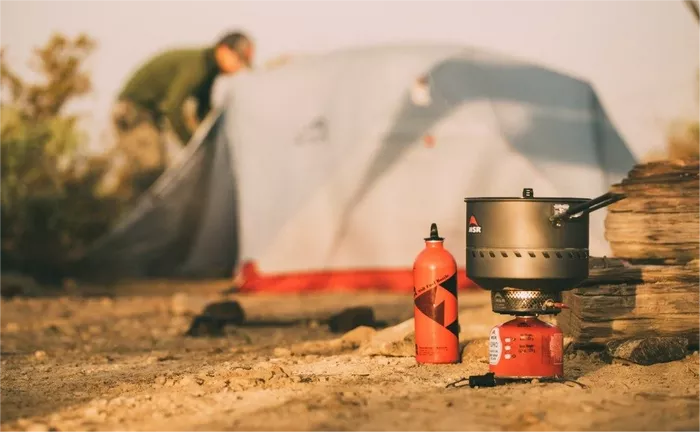When venturing into the great outdoors, every ounce matters. Whether you’re embarking on a multi-day trek through the wilderness or a weekend getaway in the mountains, calculating the right amount of fuel for your backpacking stove is crucial. Carrying too much adds unnecessary weight, while carrying too little could leave you without the means to cook your meals or purify water. So, how much fuel do you really need when backpacking?
Understanding Your Fuel Needs
Before setting out on your backpacking adventure, it’s essential to understand your fuel needs. Several factors influence how much fuel you’ll require, including the type of stove you’re using, the duration of your trip, the altitude and weather conditions, and your cooking habits.
Type of Stove
The type of stove you choose significantly impacts your fuel consumption. Backpacking stoves generally fall into two categories: canister stoves and liquid fuel stoves.
1. Canister Stoves: Canister stoves are convenient and easy to use. They typically use compressed gas fuel, such as isobutane or propane, which comes in sealed canisters. These stoves are lightweight, compact, and ideal for solo or small group backpacking trips. However, they can be less efficient in colder temperatures and at high altitudes.
2. Liquid Fuel Stoves: Liquid fuel stoves, such as white gas stoves, use refillable fuel bottles filled with liquid fuel. They are more versatile and perform better in extreme conditions, making them suitable for long expeditions and winter camping. While liquid fuel stoves are heavier and require more maintenance, they offer better fuel efficiency over a wide range of temperatures and altitudes.
Trip Duration
The duration of your backpacking trip directly influences your fuel consumption. A weekend getaway requires less fuel compared to a week-long expedition. It’s crucial to estimate the number of meals you’ll be cooking each day and factor in additional fuel for boiling water for drinking and cleaning utensils.
Altitude and Weather Conditions
Altitude and weather conditions can affect the efficiency of your stove and fuel consumption. At higher elevations, the air is thinner, which can cause canister stoves to perform less efficiently. Cold temperatures can also impact fuel vaporization in canister stoves, reducing their output. Liquid fuel stoves are more reliable in cold weather and at higher altitudes but may require preheating in extreme conditions.
Cooking Habits
Your cooking habits play a significant role in determining your fuel needs. If you prefer elaborate meals that require longer cooking times, you’ll consume more fuel compared to simple one-pot meals or dehydrated meals that only require boiling water. Efficient meal planning can help minimize fuel usage without compromising nutritional value or taste.
Calculating Fuel Consumption
Now that we’ve considered the factors influencing fuel consumption let’s delve into how to calculate the amount of fuel you’ll need for your backpacking trip.
Step 1: Determine Fuel Consumption Rate
Start by determining the fuel consumption rate of your stove. Most manufacturers provide this information in terms of burn time per ounce of fuel or BTUs (British Thermal Units) per hour. This information is crucial for estimating how much fuel you’ll need for cooking and boiling water.
Step 2: Estimate Daily Fuel Requirements
Next, estimate your daily fuel requirements based on your cooking plans. Consider the number of meals you’ll be cooking, the cooking time for each meal, and any additional fuel needed for boiling water for drinking and cleaning.
Step 3: Factor in Environmental Conditions
Adjust your fuel estimates based on environmental conditions such as altitude and weather. In colder temperatures or at higher elevations, you may need to increase your fuel reserves to account for decreased stove efficiency.
Step 4: Account for Contingencies
Always carry a buffer of extra fuel to account for unforeseen circumstances such as inclement weather, delays, or emergencies. It’s better to have surplus fuel than to run out when you need it most.
Example Calculation
Let’s walk through an example calculation to illustrate how to determine fuel needs for a backpacking trip:
Trip Duration: 3 days
Number of Meals per Day: 3
Cooking Time per Meal: 15 minutes
Burn Time per Ounce of Fuel: 60 minutes
Altitude: Moderate (No significant impact on stove efficiency)
Total Cooking Time per Day: 3 meals/day x 15 minutes/meal = 45 minutes
Total Cooking Time for Trip: 3 days x 45 minutes/day = 135 minutes
Total Fuel Needed: 135 minutes ÷ 60 minutes/ounce = 2.25 ounces
Additional Considerations
Efficiency Tips: To maximize fuel efficiency, use a windscreen to shield your stove from breezes, simmer your meals instead of boiling them vigorously, and insulate your cookware to retain heat.
Fuel Storage: Store your fuel canisters or liquid fuel bottles securely in your backpack to prevent leaks or spills. Ensure they are easily accessible but well-protected from impacts.
Leave No Trace: Practice Leave No Trace principles by minimizing fuel consumption, extinguishing your stove properly, and packing out any empty fuel canisters or bottles.
Conclusion
Determining how much fuel to carry when backpacking requires careful consideration of various factors, including stove type, trip duration, environmental conditions, and cooking habits. By understanding your fuel needs and calculating them accurately, you can minimize weight while ensuring you have an adequate supply to cook meals and purify water throughout your journey. Remember to plan ahead, pack responsibly, and enjoy your outdoor adventures safely and sustainably.

